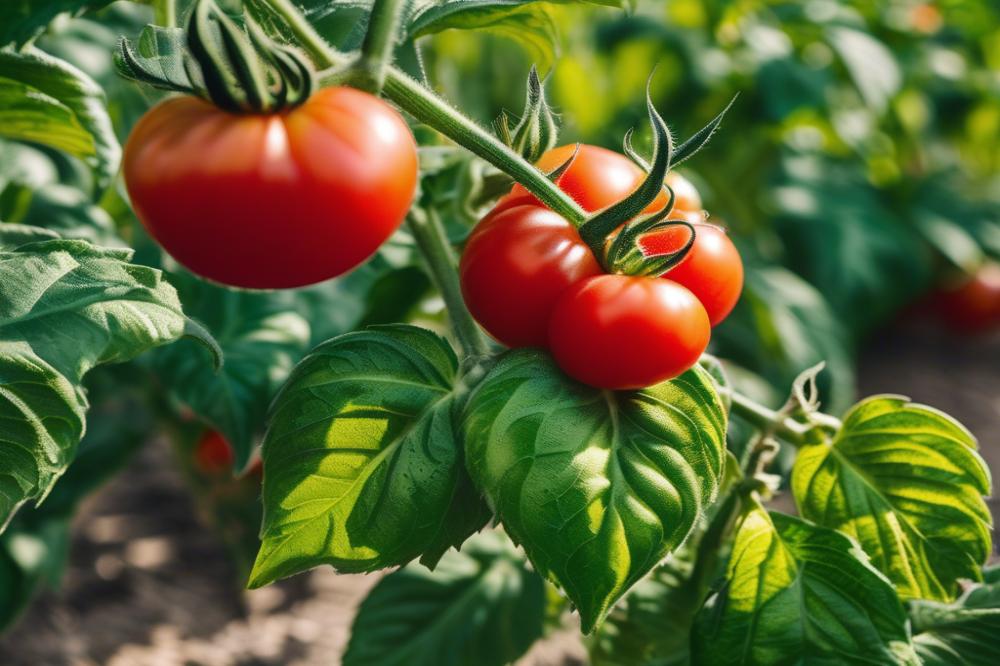Understanding tomato hornworms
tomato hornworms are common pests that can wreak havoc on vegetable gardens. These large green caterpillars are known for their insatiable appetite. When left unchecked, they can quickly strip tomato plants of their leaves. This damage not only affects the plants’ growth but can also lead to reduced yields. For gardeners dedicated to organic gardening, these pests pose a significant challenge. Controlling them effectively is crucial for a successful harvest.
Gardening enthusiasts must be aware of how hornworms impact tomato plants specifically. Their presence can lead to increased plant stress and vulnerability to diseases. This, in turn, can affect other plants nearby, creating a ripple effect throughout the garden. Understanding the lifecycle of these pests allows gardeners to anticipate infestations before they escalate into larger problems.
Effective pest management is not just about eliminating the infestation. It involves a balanced approach that includes caterpillar control and the implementation of gardening tips. Natural predators such as parasitic wasps can help keep hornworm populations in check. Utilizing less harmful insecticides may also be an option, but care is needed to protect other beneficial insects. Knowing when these pests are most likely to appear can make a significant difference in maintaining a healthy garden.
A proactive stance toward pest control helps minimize damage. By observing plants regularly, gardeners can spot signs of hornworms early. Quick action can save more than just tomato plants; it helps keep the garden flourishing. Therefore, understanding these unique pests leads to better outcomes and a more enjoyable gardening experience.
Lifecycle of Tomato Hornworms
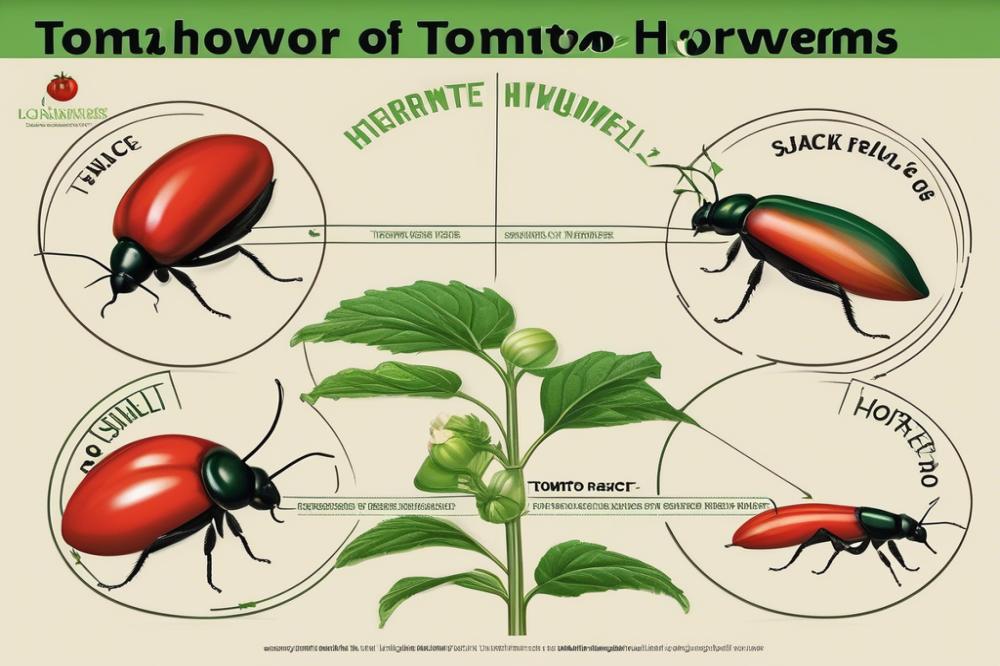

The lifecycle of these garden pests is fascinating and crucial for understanding how to manage them. It begins when adult moths, known as Five-spotted Hawk Moths, lay eggs on the undersides of tomato plant leaves. Each female can deposit up to several hundred eggs. These eggs, small and greenish in color, hatch within about a week, depending on temperature and humidity.
Once the eggs hatch, the larvae emerge. These caterpillars start feeding voraciously on the foliage of tomato plants. This stage lasts for about three weeks, during which they grow significantly. Environmental factors such as warmth and available food can accelerate their growth. As they eat leaves, you may notice holes or complete defoliation of your plants. This is a critical time for gardeners to pay attention. Monitoring plants daily can help catch them early, preventing further damage.
After they have reached a sufficient size—typically about four to five inches—larvae will cease feeding. Instead, they search for a safe place to pupate. The pupal stage, which can last 7 to 14 days, is crucial for their transformation into adult moths. They often bury themselves in the soil or find shelter among leaf litter. Environmental conditions again play a role here; warmer temperatures can speed up development, leading to quicker emergence of adult moths.
The transformation culminates when these morning moths finally emerge from their pupal cocoon. Adult moths are attracted to gardens, especially in the warm summer months, promoting a new cycle. Understanding this lifecycle is essential for effective pest management in vegetable gardening.
Organic gardening strategies often emphasize natural methods for caterpillar control. Natural predators, such as birds and wasps, can help reduce hornworm populations. Introducing beneficial insects can be an effective approach. However, if infestations become severe, insecticides may be necessary. Timing is vital, as these methods should be applied before the larvae reach maturity.
Integrated pest management (IPM) practices can help gardeners maintain healthy tomato plants. Awareness of the lifecycle allows for better planning. Recognizing the signs of early infestation can facilitate timely interventions, thus minimizing potential plant diseases and crop loss.
Identifying Tomato Hornworms
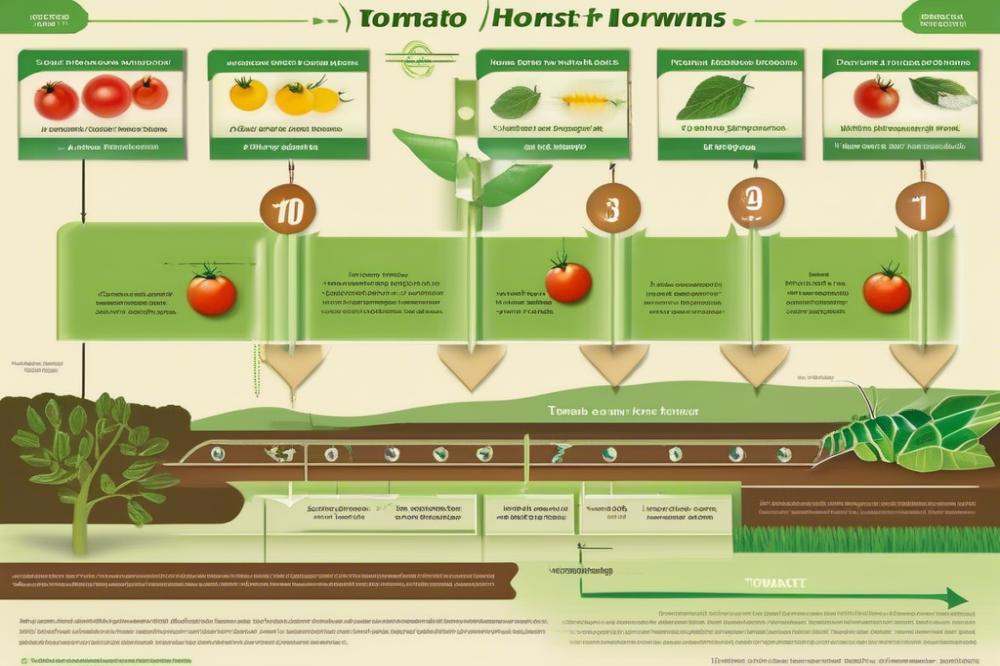

Tomato hornworms are large, green caterpillars that can wreak havoc in the garden. Their impressive size typically ranges from three to five inches long. Observing them can be a daunting experience for gardeners. Their bodies exhibit a green color, allowing them to blend seamlessly with the leaves of tomato plants. Sharp white or yellow stripes appear along their sides, giving them a distinct look.
Regular inspection of your vegetable garden is crucial for early detection. Damage on tomato plants reveals the presence of these pests. Look for chewed leaves that appear to have been torn or nibbled. Additionally, finding small droppings on the soil below can be a clear sign of their activity. These droppings resemble tiny black pellets. If you spot these, don’t ignore them—the caterpillar control begins with diligent monitoring.
In organic gardening, consider developing a routine to check plants. Spend time looking under leaves and inspecting stems, where they often hide. Early warnings can prevent larger infestations and subsequent damage. Including natural predators in your gardening strategy could also help manage their population. Birds, wasps, and other beneficial insects play a role in pest management without the need for harsh solutions.
Another tactic is the removal of any infected leaves to reduce the risk of plant diseases. If your garden is already facing an issue, some insecticides may be considered, but rely on them sparingly. The lifecycle of these pests means they can quickly become a significant problem if not dealt with effectively. Make your garden a more thriving environment by being proactive. Taking time to understand these creatures will reward you with healthy plants and a bountiful harvest.
Pest Management Strategies
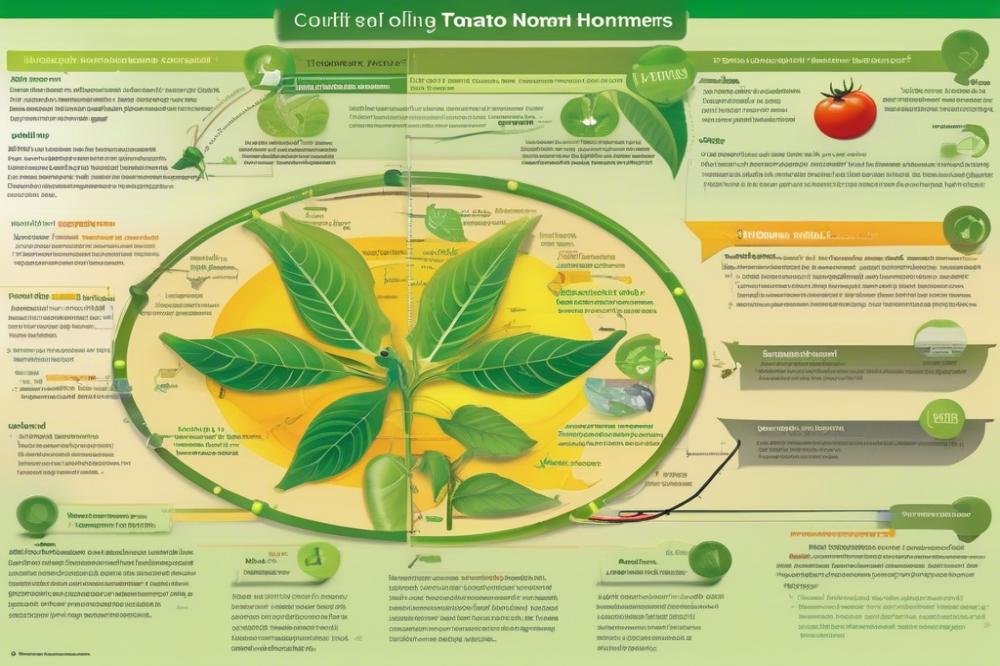

Managing pests in vegetable gardening requires a thoughtful approach. For gardeners dealing with tomato hornworms, several strategies can help keep these unwanted guests at bay. These caterpillars can quickly damage tomato plants if left unchecked, but there are ways to control their population.
Organic gardening practices play a vital role in pest management. By using methods that work with nature, gardeners can reduce harmful side effects. One effective technique involves promoting natural predators. Birds, for instance, feast on these caterpillars and help maintain balance in the garden ecosystem. Beneficial insects like ladybugs and lacewings also contribute by targeting other harmful pests. By encouraging these allies, gardeners can create a healthier environment.
Apart from attracting natural predators, integrated pest management (IPM) offers a comprehensive solution. This approach combines multiple tactics to manage pests more effectively. Monitoring is a critical part of IPM. Regular checks for caterpillar activity on leaves can help gardeners spot issues early. Early intervention is key to preventing extensive damage.
When dealing with plant diseases or pest outbreaks, some gardeners may resort to insecticides. While these products can be effective, caution is necessary. Synthetic insecticides can harm beneficial insects and disrupt the delicate balance. Organic alternatives, however, can provide relief without the same risks. Products derived from natural sources often offer targeted solutions that minimize side effects.
Understanding the lifecycle of pests is another valuable strategy. Tomato hornworms go through various stages that are unique to their development. Knowing when these creatures are most vulnerable helps gardeners choose the right time for intervention. For example, targeting eggs and early-stage caterpillars minimizes their ability to cause harm.
Gardening tips also include maintaining healthy plants to make them resilient against pests. A strong tomato plant can withstand some damage while still producing a good crop. Proper watering, nutrient management, and disease prevention techniques support overall plant health. This foundational care can reduce the likelihood of major pest issues.
In summary, effective pest management involves a blend of organic practices, understanding pest lifecycles, and leveraging natural enemies. Employing these strategies can lead to healthier and more productive gardens while minimizing the use of harsh chemicals.
Caterpillar Control Techniques
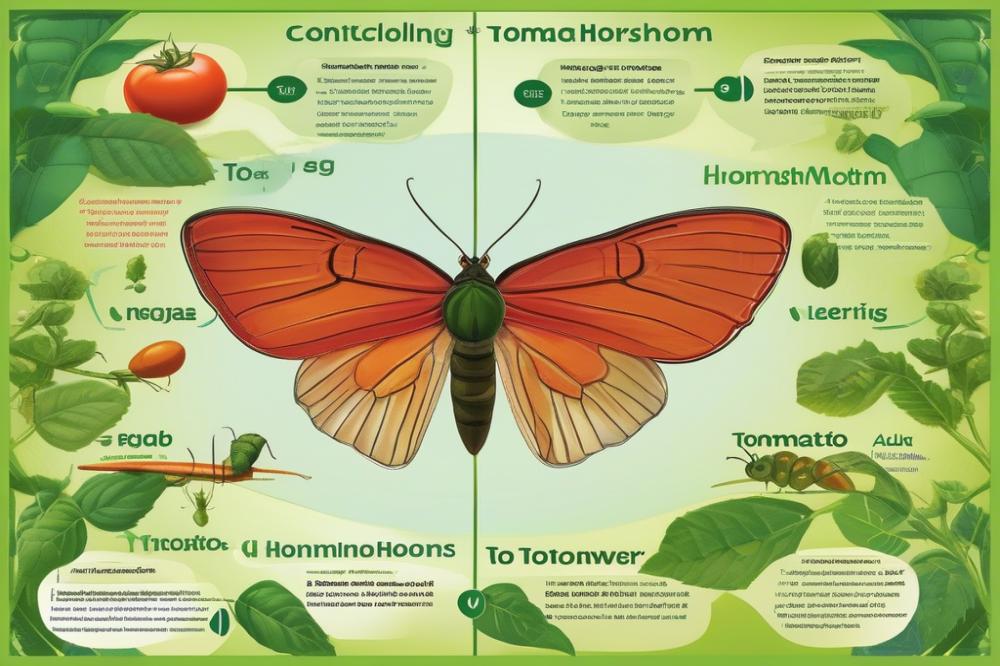

Gardening enthusiasts often face the challenge of caterpillar infestations. Effective pest management is vital to protect your vegetable gardening efforts. One of the most widely reported methods involves the use of natural insecticides, particularly Bacillus thuringiensis (Bt). This bacterium works by targeting the digestive systems of caterpillars, causing them to stop feeding and eventually die.
When applying Bt, timing is essential. Success depends on treating your tomato plants when young caterpillars are actively feeding. Check your plants regularly, especially in the early morning when pests are most noticeable. A targeted spray can help. To maintain effectiveness, make sure to follow the product instructions closely.
Diverse approaches can also enhance your results. Encouraging natural predators is a smart way to control pest populations. Birds, beneficial insects, and even some small mammals can keep caterpillar numbers down. Attract them by planting native flowers nearby or by placing birdhouses in your garden.
Another critical factor in pest management is ensuring overall plant health. Strong tomato plants are more resilient against various threats, including plant diseases. A balanced diet from compost and regular watering aids in this process. Healthy plants can recover better from infestations and reduce the likelihood of severe damage.
Some gardening tips to consider include crop rotation and proper spacing. These practices can disrupt the lifecycle of pests and minimize their impact. Additionally, handpicking larger caterpillars can prove effective in small gardens. Simply inspect your plants regularly for any signs of infestation.
In summary, managing caterpillars involves a combination of using natural insecticides, maintaining healthy plants, and fostering a supportive ecosystem for beneficial creatures. This multifaceted approach will strengthen your tomato plants against pests in a sustainable way.
Preventing Tomato Hornworm Infestations
Gardening can be a rewarding experience, but protecting your plants is essential. Tomato hornworms are one of the most challenging pests for vegetable gardening enthusiasts. Employing a mix of strategies can help keep your garden healthy and pest-free.
Crop Rotation
One of the simplest methods to prevent infestations lies in crop rotation. Each season, try moving your tomato plants to a different area of your garden. This practice disrupts the lifecycle of pests. Changes in location can reduce the chances of caterpillar control issues. Insects often return to the same host plants year after year, so relocating helps.
Companion Planting
This technique involves growing certain plants together. For example, marigolds are known for repelling some pests. Beneficial plants can attract natural predators like wasps and birds that help manage pest populations. Consider herbs such as basil and parsley; these companions can keep your tomato plants healthy and reduce risk.
Maintaining Garden Hygiene
Staying organized is key. Remove any debris or fallen fruit from the garden promptly. These materials can harbor pests and diseases, creating a haven for future hornworm problems. Keeping a tidy environment reduces hiding places for unwanted insects. Regularly inspect your plants as well; catching issues early can save you trouble later.
Monitoring Plant Diseases
Healthy plants are less attractive to pests. This makes monitoring for plant diseases critical. Stressed or weakened plants tend to draw in pests like moths that lay eggs, which leads to hornworm infestations. Dealing with signs of disease means your tomatoes can thrive and be less vulnerable.
Implementing these gardening tips creates a proactive approach to pest management. Utilizing strategies like crop rotation, companion planting, and hygiene will make tomato plants resilient. Always be alert and ready to address issues that may arise within your garden. Attention to detail goes a long way in maintaining a productive and healthy garden.
Final Thoughts on Managing Tomato Pests
Managing tomato hornworms requires attention and action. These pests can wreak havoc on your plants, leading to significant losses in your vegetable gardening efforts. As gardeners, we must be aware of their presence and understand how they impact our crops.
Control measures discussed highlight both preventive and reactive strategies. Regular inspections of your plants can help you catch these pests early. Utilizing beneficial insects and natural predators serves as an effective way to manage their population. Additionally, applying organic solutions can reduce the risk while promoting a healthier growing environment.
Balancing the health of tomato plants with pest control is crucial. It is possible to care for your crops without resorting to harsh chemicals. This approach aligns with the principles of organic gardening, fostering sustainability in your garden. Healthy plants can better resist pests, which emphasizes the need for preventive care.
Applying the tips shared can lead to successful results. By staying proactive, you empower yourself to manage challenges that arise. Dedicate time to monitoring your garden regularly. With diligence, you can enjoy abundant harvests while minimizing damage from pests.
Embrace the journey of gardening with both its trials and triumphs. Each step taken toward more effective pest management enhances your experience. Remember, healthy plants thrive when coupled with appropriate control methods.

